Nissan May Bring $2,500 Car to European and US Markets
标签: Nissan 0 评论A Nissan priced at $2,500 that enters the Indian car market in 2010 could make its way into international markets, confirms Nissan CEO Carlos Ghosn in an interview at the Tokyo Show.
Speaking to a small group of reporters in Tokyo, Ghosn raised what he sees as the big question; whether the car to be sold in India could succeed outside of the developing Indian market, being exported into mature markets, chiefly Europe, the US, Canada and Japan. The answer is Nissan don't know, citing the lack of data as a lingering question over exportation.
The new ultra-low-priced vehicle is destined to take on Tata's $2,500 car on home soil, the new Tata entering the Indian market in 2008. Ghosn confirmed that he has not signed off on using Indian motorcylcle manufacturer Bajaj Auto Ltd. to produce the new vehicle - a meeting with Bajaj executives to take place on Monday over the prospect of a collaboration.
The Nissan CEO said that frugal thinking was needed on the project, adding: “You don’t need anything in the car that is not needed by customers.” However it was acknowledged that for entry into worldwide markets, a number of changes would be neccessary. Western market regulations would neccessitate the addition of further features, such as those for meeting crash safety requirements.
Ghosn did however add that Nissan may still be able to offer the car for "around $3,000," despite the enhancements. It's all now just wishful thinking but if it can be done successfully, Nissan'll have a winner on their hands. Watch this space.
(The Nissan Cube, pictured above, is a 5 and 7-seater compact car sold in the Japanese market, which may form the conceptual if not technical basis for India's $2,500 car.)
All Content ......
Posted in Nissan by Benz
How to wax a car
标签: car maintenance 1 评论All Content ......
Posted in car maintenance by Benz
Extended warranty for your car
标签: car maintenance 1 评论What is an extended warranty?
All new cars come with original warranty provided by a car manufacturer. This original warranty covers most of the vehicle components for a certain period - most commonly, three years or 36,000 miles. After the original warranty expires, you will have to pay for all repairs out of your pocket. This is when an extended warranty may be helpful. An extended warranty is basically a service contract between the car owner and the warranty company. According to this contract, the warranty company will pay for the repairs covered by the contract for a specific period of time. It's something like health insurance for your car. With an extended warranty you are protecting yourself from unexpected repair costs.
For instance, you bought a used car that is out of original warranty and the transmission fails. If you don't have an extended warranty you will have to pay for the repair, and this may cost you as much as a couple thousand dollars. If you had a good extended warranty, it would cover most of the repair costs - in some cases you would only have to pay a diagnostic fee, or a deductible, depending on the type of warranty you have.
However, not all cars are qualified for an extended warranty and not everything is covered. Wearable items like belts, brake pads and tires are usually not covered. Also, you still have to maintain your car properly and keep all the receipts.
There are two major types of auto extended warranties - ones provided by car manufacturers and the others that are backed by third party companies, also called aftermarket extended warranties. The manufacturer's extended warranty can be bought from an authorized dealer and it works similar to an original warranty, where for any repair you have to take your car to a dealer and they perform any covered repairs.
With an aftermarket warranty, depending on the policy, you have to take your car either to a dealer or a certified repair facility. They call your extended warranty company (administrator) for an authorization and if the part is covered, the extended warranty administrator authorizes the repair and the repair facility performs the necessary repairs. Some companies like, for example, Warranty Direct will pay directly to the repair facility, others may require you to pay the repair bill and then wait for reimbursement.
Do I need an extended warranty for my car?
To decide whether you need an extended warranty or not, you should look closely at your situation and your car. Here are some key questions you should ask yourself:
For how long are you going to keep your car after the original warranty expires? - You don't need an extended warranty if you have a new car and you are planning to trade it in before, or right after the original warranty expires. But if you want to keep your vehicle for a few more years - an extended warranty is worth considering.
Do you have any other warranty coverage? - You don't need duplicate coverage for your car. Find out what coverage you already have. For example, if you bought a used car from an authorized dealer under "Certified Pre-owned" program, you may already have some warranty coverage that comes with the car.
Are you prepared to handle any unexpected repairs? - If you don't know much about cars, if you don't have a good trusted mechanic, if you prefer to pay for a sense of security and don't like to have unexpected expenses, a good extended warranty is what you need. When your car needs a repair, take it to a dealer or an authorized repair shop and show them your extended warranty contract - if the repair is covered, your extended warranty will take care of that.
How reliable is your car? - Research your car reliability history. Some cars are known for their reliability - Toyota Corolla and Honda Civic are two good examples. The more reliable your car is, the less likely it will have unexpected problems. For example, a friend of mine has spent only about 600 dollars over five years on his ten-years old Toyota Corolla for repairs other than regular maintenance. If your car is known for high reliability and you maintain it well, it's less likely that you will benefit from an extended warranty, although it's a fact that all cars break sometimes even most reliable ones.
What options does your car have? - The more options, the more can go wrong. Cars become more and more complex these days and use more and more sophisticated electronics. Things like power windows, central locking, ABS, heated seats, immobilizer, traction control are on the list of available equipment of nearly any new car now. Almost every minivan now offers options like power sliding doors, dual air conditioning, tire pressure monitoring and DVD entertainment system. SUVs are also stuffed with things like four-wheel drive system, vehicle stability control, navigation system, etc. Todays luxury cars are more like space ships with long list of high-tech gadgets. While it's good to have more options in your car, they significantly increase the average cost of repair. A simple thing like a faulty seat heater can cost you several hundred dollars to fix. The point is, the more features your car has, the more chances something will break, making more sense to have a good extended warranty coverage.
How expensive are parts for your car? - Parts (and labor) for some cars tend to be more expensive. Examples are: Volkswagen, Audi, Volvo, BMW, Lexus, Infiniti, Mercedes-Benz, Jaguar, Acura, Lincoln, Cadillac to name a few. Do some research on your particular model. Ask your mechanic, read reviews. Definitely consider a good extended warranty if you have this type of car.
However, you won't necessarily save money with an extended warranty. If your car won't have any problem during extended warranty coverage period, you'll loose money you paid for your coverage. I think it's more about peace of mind than saving money. You are paying for the sense of security, protecting yourself from unexpected repair expenses. Another benefit of having an extended warranty is that when your car has a problem you can take it to a dealer where usually you can expect better level of service than in a small independent garage. Also consider that some extended warranties provide additional benefits like towing, lost key/lockout, and car rental discounts.
What to look for choosing an Extended Warranty
There are number of things you should check about any particular extended warranty before signing a contract. First thing you need to know is who is the warranty administrator, the company that will authorize and pay your repair claims - is this a reputable company?
- Do some research on the particular extended warranty company; you want to deal with reliable company that won't disappear in few years. Try to find out how long this company has been in business, ask friends, ask your mechanic, check BBB report and other sources.
- Review the actual extended warranty contract before signing. Beware when they refuse to give you a copy of a contract for review before signing it - don't deal with this types of companies.
- How the claims are handled, how the company authorizes the repair? - do they send an adjuster to inspect the car, which usually takes more time or do they trust the repair facility? Also, some extended warranty providers require you to pay the repair bills and then send them the repair bill and wait for reimbursement. Other companies will pay directly to the repair facility, so you don't have to spend your money - definitely, it's more convenient.
- Do you have to pay deductible? - Some contracts may offer zero deductible, others may require you to pay a certain deductible amount, and it could be per visit or per repair.
- Where do you have to take your car for repairs? - Can you take your car to the repair facility of your choice or only to the dealer who sold you the car?
- What are the maintenance requirements? - some companies may require you to follow maintenance schedule for severe conditions or have some other unreasonable requirements.
- Check what is covered and what is not, you may want to consult with your mechanic or a dealer what coverage you need for your car. Are problems caused by wear and tear covered? Many problems with your car can be caused by wear and tear but some warranties may only offer coverage for problems caused by mechanical breakdown which is not always the case.
- Is the policy transferable? - If you have an extended warranty that is transferable, it will be a very good selling point if you decide to sell your car.
- Call the garage where you are planning to service your car; or if you don't have a particular place in mind, call few local dealers or repair shops and ask if they will honor an extended warranty from this particular company. If they have had bad experience with this company, they may refuse to work with them.
When should I buy an extended warranty coverage?
You don't have to buy an extended warranty at the day when you are buying your new car. You can buy it sometimes later, but the tendency is that the cost of coverage grows up as the car gets older. This means that if you buy an extended warranty earlier it may cost you less. One of the reasons is that auto repair rates are constantly increasing.
Where to buy an Extended Warranty?
As I already mentioned before, there are two major types of an extended warranty: manufacturer's backed extended warranty and aftermarket or third-party extended warranty. Manufacturer's extended warranty is easier to use, but tends to be more expensive. If you are looking for manufacturers extended warranty, you can check manufacturer's website for more information (They may call it differently, for example, Toyota calls it "Vehicle Service Agreement" Ford calls it "Extended Service Plan" Honda calls it "Honda Care vehicle service contract", GM calls it "Protection Plan"). Manufacturers extended warranty are sold through authorized dealers and often you can find that different dealers offer different prices for the same coverage, so, shop around.
Aftermarket warranties are sold through car dealers, banks and other organizations. Some warranties are also sold directly through the internet, meaning that you can buy directly from a warranty provider without paying dealer's mark-up.
Not all aftermarket companies offer same level of service and protection.
One of the most often mentioned extended warranty sold online is the WarrantyDirect. The WarrantyDirect has a good reputation, they have been in business more than 25 years, they have nearly 2 million contracts sold and they are insured by an "A" rated A.M Best insurance company. In addition, the WarrantyDirect has very small amount of BBB claims. You can get an instant free online extended warranty quote at their website, follow this link:
All Content ......
Posted in car maintenance by Benz
Mazda Taiki Concept: In Detail
标签: Mazda 0 评论
Flow design - a journey that explores the future of Mazda design
Since the 2002 launch of the Mazda Atenza (Mazda6 in export markets) as the first in a new generation of models, Mazda design has been earning the praise of customers, car specialists and designers around the world. Mazda concept car designs have firmly established a global reputation for eye-catching, Zoom-Zoom appeal - from the Mazda Senku concept car introduced at the 2005 Tokyo Motor Show, which went on to win the Grand Prix du Plus Beau Concept Car at the 21st Festival Automobile International in 2006 in Paris, to the sports car study, Mazda Kabura, winner of the 2006 Detroit Motor Show’s Aesthetic and Innovation Award.
Building on this solid foundation while still further advancing the design of Mazda cars and instilling an even sportier and more athletic look, I challenged our design team to develop a new form of expression that evokes a perception of motion, even when the car is standing still. This gave birth to the theme of “flow” design, as based on the Japanese word “Nagare”, which means “flow” or “the embodiment of movement”. We turned to nature for inspiration, focusing on images of motion created in nature by forces like wind and water. Natural flow lines are all around us - shapes etched in sand dunes by the wind, ocean waves as seen from above, lava flows running down the slopes of a volcano. All lend an intuitive sense of motion. But it was in making the transition from observing motion in nature as an expression of energy to applying it to a manmade object such as a car that we discovered what a thoroughly exciting and logical creative approach the design concept represented. This revelation allowed us to proceed to create one dramatic and unique design after another.
The first concept car created using this new approach was the Mazda Nagare, which US-based design team Chief Designer Franz von Holzhausen sees as a pure reflection of the flow design approach.
Mazda Ryuga followed closely after from Mazda’s Hiroshima Design Center, expressing the beauty of motion found in nature, as well as motion controlled by man. Chief Designer Yasushi Nakamuta explains, “The challenge was to incorporate elegant and refined design treatments that express Japanese concepts of mysterious beauty and intelligence within a dynamic body shape.”
Evidence of this approach can be observed in the side surfaces, which were inspired by the simple yet beautifully refined flow of carefully raked rocks found in Japanese karesansui gardens.
Mazda’s European Design Center presented us with the Mazda Hakaze design concept, aimed not only to suggest future possibilities for a compact crossover vehicle from Mazda, but also to offer a concept that fully considers practical application. Chief Designer Peter Birtwhistle sought to express the sensation of the wind blowing across the sand dunes, both in the textures used for the sides of the body, and within the interior as well. And true to this, repeated patterns across the exterior and interior, which evoke images of sand dunes, effectively express flow and motion.
Visitors to the 2007 Tokyo Motor Show will take delight in the Mazda Taiki, the fourth concept car in the series. Created by the Yokohama Design Center team led by Chief Designer, Yamada Atsuhiko, the Mazda Taiki represents a possible direction for design and technology to support the future of Mazda’s “Sustainable Zoom-Zoom” efforts. Innovative styling, instantly transporting the viewer's senses into the future, doesn’t stop merely at making a design statement. Rather, it additionally encompasses highly functional beauty, featuring outstanding aerodynamic performance. Driving pleasure in a work-of-art cockpit achieves the right balance between Zoom-Zoom driving pleasure and environmentally responsible performance. The Mazda Taiki clearly offers an iconic look at the Mazda sports car of the future.
Starting with the debut of the Mazda Nagare at the Los Angeles Auto Show, the process of moving from west to east around the globe towards the unveiling of the Mazda Taiki in Tokyo as we explored future design possibilities was a journey of personal discovery for Mazda design. Still, it does not mean that we arrived at any specific goal. On the contrary, it marks a new beginning in the ongoing evolution of Mazda design.
Mazda Taiki Concept - aimed at helping create a sustainable society
Mazda Taiki reflects one possible direction for a future generation of Mazda sports cars aimed at helping create a sustainable society. The fourth concept car in the Nagare design series, Mazda Taiki, further evolves the “flow” theme to establish a breathtaking presence that clearly defines its Nagare credentials, and visually expresses the atmosphere - called taiki in Japanese - that wraps the Earth in its protective mantle. Centering around the performance rotary engine sports packaging that is synonymous with the Mazda name, technologies introduced for the Mazda Taiki include the next-generation RENESIS (rotary engine 16X, refer to book separate volume for details), which sets new standards for environmental and driving performance, a front-engine rear-wheel-drive layout, unique 2-seat configuration, and others which convey an image of lightness. The effect integrates perfectly the design theme to realize unbeatable aerodynamic performance.
The flow of air as a design concept
An evolution of Nagare design; the form of a car that operates in harmony with the environment; the creation of an iconic Mazda sports car symbolized by its next-generation RENESIS. To bring these concepts together and create a design worthy of the Nagare design series, chief designer Atsuhiko Yamada presented his team with a single objective: create “a design that visually expresses the flow of air”.
“The preceding three concept cars in the Nagare series each took a hint from nature, such as the flow of water or the patterned surface of wind-swept sand dunes. In contrast, we wanted the concept car for the Tokyo Motor Show to convey both the beauty and power of nature, while also emphasizing the importance and the wonderful splendor of our environment. That led to our focusing on the air that blankets our planet and our desire to apply Nagare design in visually representing this entity, which is normally invisible to the eye.”, Chief Designer Atsuhiko Yamada’s words summarize, and as the very name of the concept car makes clear, Mazda Taiki’s futuristic design embodies Mazda’s determination to build cars that contribute to the realization of a sustainable society.
Hagoromo exterior embodies celestial robes waving on a breeze
The challenge to create “a design that visually expresses the flow of air” was inspired by the image of a pair of Hagoromo - the flowing robes that enable a celestial maiden to fly in Japanese legend - floating down from the sky. In addition to drawing sketch after sketch in various attempts to capture the right look, the designers also tried unique approaches, such as soaking cloth in plaster and then hanging it to dry while flapping in the wind, thereby capturing the motion of air in solid form. This gave birth to an innovative design, one with a nimble, light appearance and flowing contours that naturally capture the hearts and imaginations of those who see it.
The basic proportions begin with the stretched coupe form of a front-engine rear-wheel -drive layout, the short overhangs, and the liberating feel of the all-glass canopy, which combine to express a harmony of elegance and sportiness. The lower of the layered hagoromo flows from the front fenders to the sides, where it wraps under the body and gracefully curves up at the rear. The other hagoromo flows from the hood through the shoulder lines it etches, past the unique independent rear fender design, and lends a seductive curve to the rear deck. The fusion of these flowing upper and lower surfaces not only creates a visual depiction of flowing air, it also minimizes body volume for a trim, well-toned appearance, as well as creating a sense of floating lightly on air. This sensation is further amplified by the Ozonic Silver paint that was specially developed for this project. The outer panels of the doors that open widely toward the front form a relief that symbolizes the accelerating flow of air actually experienced by the designer during wind tunnel tests.
Aerodynamic performance with a drag coefficient of 0.25 and zero lift
The design team sought to achieve an extremely high level of aerodynamic performance through a combination of design and technologies. A bird's-eye view of the Mazda Taiki body shows how much its width is tapered from front to rear. From the side, one sees the smooth line of the flat underside kick up dramatically at the rear of the body. Validating the designer's wish to visually capture the motion of flowing air, wind tunnel testing proved the excellent aerodynamic performance inherent in the design. The distinctive shape around the rear wheels, which channels air flowing back from the front fender through a 'tunnel' formed between the body and rear fender, also proved effective in creating downforce. The already high aerodynamic potential of the original form was then fine tuned, the end result being an excellent drag coefficient of 0.25 and zero lift.
Details that capture the image of flowing air
Flowing illumination
The edges of the blades that comprise the grille are fitted with ultra-fine rows of brilliant LEDs. The rear combination lamps and door-mounted turn signal lamps employ unique Mazda technology and appear to shine through the body color but are distinguishable only when lit. The effect throughout creates the illusion of flowing air being transformed into lights visible to the human eye.
Dynamic tire tread pattern and wheel design
A collaborative effort with the tire designers and engineers created 22-inch tires for the Mazda Taiki that are dynamic in size and feature a bold tread pattern modeled after a flowing motif. The turbine wheel design was inspired by the turbo fan blades of a jet engine and developed in close collaboration with wheel engineers to create a unique design.
Koinobori interior design
Inspired by Japanese koinobori - the decorative “climbing carp streamers” that fly proudly in the early May skies of Japan- the notion of creating an Air-tube became the concept word for the interior design. In accordance, everything from the dashboard and seats down to the door trim creates the dynamic sensation that the flow of the wind is being visually depicted.
At the same time, the design team created a unique ambience for each half of the interior. The colors and materials clearly divide the cabin into black and white zones, and the strength of the design lines expresses a dynamic yet gentle quality.
On the driver’s side, the dashboard twists in dynamic fashion and continues on the cushion of the driver's seat. The independent seatback and headrest also create a new expression of flowing lightly, as though on a breeze. Black trim used as the keynote color, creates an environment that better helps the driver concentrate on driving.
The passenger 'zone' provides the relaxing comfort of a lounge chair surrounded by plenty of legroom. The white trim color helps accent the resulting expression of roomy comfort that truly befits a passenger seat.
The design concept aims for a new form of sports car cabin. The center shelf between the driver and passenger seats can be effectively used as flexible utility space.
Interior details that emphasize flow
The cabin precludes any sense of symmetry or adherence to any prescribed design doctrine. Each part embodies flowing wind, instilling a light, airy feel, that also creates an organic, dream-like ambience.
Structural beauty with emotion
The transparent teardrop roof that covers the cabin is reinforced by a truss frame with flowing contours that constitute one part of the body structure. The same design theme is also applied to the steering column and seat frame of the driver's seat. To make the beautiful contours of this frame design clearly visible, the cushion and back for the driver's seat are made from a clear elastic silicone plastic material.
Zen calligraphy with a shine
The black and white genuine leather of the interior features flowing calligraphic strokes painted on the surface using a gloss paint that contains metallic pigment. A new technique developed through collaboration with textile designers allowed an artist to use a brush to visually recreate the flow of the wind. The lines follow the contours of the dashboard and seats to further emphasize the sense of flow. The material surface is coated using a process that is unique to Mazda.
Tachometer that renders visible the beat of the rotary engine
Extending gracefully to embrace the steering wheel and driver’s seat, the respective edges of the dashboard each feature a row of red LEDs that function as the tachometer. Streams of red light flow toward the front on either side of the driver to visually depict leaps in engine RPM. The result is dynamic visual feedback that expresses the emotion of driving.
Advanced human-machine interface (HMI)
To further advance safety performance and take it to new levels for the future, Mazda is actively working on an HMI that will make communication between driver and machine smoother and easier, as well as further developing advanced active safety technologies. Multi-control switches for the respective systems are integrated into the rotary-inspired steering wheel in a design that allows drivers to perform all driving operations without removing their hands from the steering wheel. Also integrated into the steering wheel is a multi-display that provides the driver with a variety of information displays.
Mazda Taiki - Specifications
| Overall length | 4620 mm | |
| Overall width | 1950 mm | |
| Dimensions | Overall height | 1240 mm |
| Wheelbase | 3000 mm | |
| Seating capacity | 2 people | |
| Engine | Type | Next Generation RENESIS |
| Transmission | Type | Dry twin clutch 7-speed power shift |
| Suspension (Front/Rear) | Type | Double wishbone |
| Tires | Type | 195/40 R22 YOKOHAMA ADVAN Super-E spec PROTOTYPE 007 |
All Content ......
Posted in Mazda by Benz
Hybrid Honda CR-Z Concept Debuts
标签: Honda 0 评论
Honda let its CR-Z Concept take its first bow earlier today at the Tokyo Motor Show. Although just one of over 15 vehicles at Honda's stand, nothing by the automaker was as hotly anticipated as this car.
This new concept is part of Honda chief Takeo Fukui's belief that hybrids will represent roughly 10 percent of total global sales at the Japanese automaker. With global sales expected to hit 4.5 million by 2010, Honda is in serious need of a hybrid that outperforms the Toyota Prius.
And it looks like they have taken the first steps in reaching that goal. Honda is planning a compact sports car based on the CR-Z, with expectations that city-dwellers will have even more reason to buy a hybrid in the years to come.
All Content ......
Posted in Honda by Benz
2008 Ford Sport Trac
标签: Ford 0 评论Inspired by 2005 concept
Ford stayed true to their word and will release the Ford Sport Trac Adrenalin at the upcoming SEMA show in Las Vegas. Back in 2005 they said in a press release: “Sport Trac Adrenalin will rush into an all-new niche in 2007”. The Ford Sport Trac Adrenalin is a mix of the Explorer Sport Trac and the F-150 Lightning and the all-new niche is the sport truck segment.
“The goal was to keep the overall design intact, right down to the wheels,” said Ford designer Melvin Betancourt. Most of the concepts styling cues made it to the production vehicle, including the 10-spoke aluminium wheels.
“The new Sport Trac Adrenalin is designed to appeal to the urban adventurer,” said Ryan Mitton, Sport Trac marketing manager. The new front and rear fascia's sit 3.5 inches lower than on a standard truck and every exterior panel has been redesigned or styled to resemble the Explorer Sport Trac aftermarket look. The Sport Trac Adrenalin looks lower although the pick-up hasn't actually been lowered, leaving the truck functionality mostly untouched. The front is finished with Mustang fog-lights under the 'sinister' grille while the back features a dual-tipped exhaust.
Ford has forgotten to mention which engine will be under the bonnet. The 2005 concept was powered by a 390hp V8 while the 2008 F-150 Harley edition comes with a 450hp 5.4 liter V8. Hopefully Ford will let us know at SEMA how fast the USD30,495 Adrenaline will go. It will go on sale in January 2008.
Detailed content:
FORD ADDS ‘ADRENALIN’ TO SPORT TRAC FOR 2008
- 2008 Sport Trac Adrenalin adds street style to its combination of functionality and utility.
- Exterior design is inspired by the Sport Trac Adrenalin concept from 2005, right down to the 10-spoke, polished aluminum wheels.
- An all-wheel-drive system, a first on Sport Trac, provides all-weather confidence with sport sedan-like handling characteristics.
The Ford Sport Trac’s urban alter ego debuts at this year’s Specialty Equipment Market Association (SEMA) show, proving that Ford can deliver aftermarket attitude straight from the factory.
The 2008 Sport Trac Adrenalin is a sport utility truck that combines the utility and functionality of a pickup with a bold new attitude and genuine sense of street style.
“The new Sport Trac Adrenalin is designed to appeal to the urban adventurer,” said Ryan Mitton, Sport Trac marketing manager. “It still offers up the functionality and capability that Sport Trac is known for, while boosting the style factor.”
The sleek boulevard-cruiser’s design was inspired by the Sport Trac Adrenalin concept that appeared at the 2005 New York Auto Show. Ford designer Melvin Betancourt was challenged to transfer the Adrenalin concept’s bold, more low-slung design to the production Sport Trac.
“The goal was to keep the overall design intact, right down to the wheels,” said Betancourt. “We had to make some minor adjustments as we went through the production process, but overall it’s been altered very little from the original concept.”
Adrenalin retains the Sport Trac’s distinctive profile, blending SUV and pickup, but the similarities end there. Every exterior panel from the beltline down has been redesigned or styled to deliver the Explorer Sport Trac Adrenalin’s cool, aftermarket look.
New front and rear fascias sit 3.5-inches lower than the units on the standard truck. Full running boards are seamlessly integrated into the body design and function to visually tie the front and rear of the truck together. The rubber step pads provide traction and add a striking graphic stripe that accents the lower portion of the truck.
“The new body panels give the Sport Trac the appearance of being lower – without actually lowering the vehicle,” said Betancourt. “You get a street cruiser look without compromising any of the functionality or capability.”
The front fascia mounts circular fog lamps in matte black binnacles, bringing in a touch of Mustang performance DNA to the Adrenalin. The prominent gloss black grille features a unique crosshatch pattern with the Ford oval badge mounted front and center.
“Graphically, the new grille gives you a bigger opening that adds to Adrenalin’s sinister look,” added Betancourt. “The crosshatch insert serves to visually set it apart from other Sport Tracs, giving the Adrenalin its own personality.”
Smooth side surfaces are the result of new front and rear fenders that lose their wheel lip moldings. Functional front fender vents, exclusive to the Adrenalin, add visual interest to the vehicle’s profile. Adrenalin also motors without roof racks.
The rear fascia features a cutout for the dual-tipped exhaust. The design is finished with body-colored mirror caps and a new tailgate with a distinctive Adrenalin badge spanning the surface of the gate in individual letters.
The interior delivers monochromatic richness. The Charcoal Black environment is accented by a stone gray headliner and features custom floor mats that are embroidered with the Adrenalin logo. Adrenalin offers the choice of cloth upholstered or premium leather-trimmed seats.
Adrenalin looks hot, bathed in special Colorado Red paint. Colorado Red, a true red without metal flake, is new to the Sport Trac lineup and will be launched with the Adrenalin. Additional color choices are White Suede, Black and Silver Birch Metallic.
The 10-spoke, 20-inch wheels are the same units found on the Sport Trac Adrenalin concept. The polished aluminum wheels are shod with P255/50R20 Pirelli rubber.
Along with the standard 4x2 drivetrain, Sport Trac Adrenalin offers an all-wheel-drive system that’s more suitable for a street cruiser. In addition to providing sure-footedness on slick surfaces, Adrenalin’s AWD system offers a performance advantage as well. The system seamlessly transfers torque from the rear wheels to the front wheels as required to provide confident handling, reducing wheel spin and improving cornering.
Adrenalin will be in dealer showrooms in early January. Base Manufacturer’s Suggested Retail Pricing (MSRP) for Sport Trac Adrenalin begins at $30,495 (including $720 for destination and delivery charges).
All Content ......
Posted in Ford by Benz
2008 Saleen S281 RF
标签: Ford 0 评论Saleen has introduced the new 2008 Saleen S281 RF. The Saleen S281 RF is powered by a 4.6 liter V8 engine that produces 465 horsepower and 425 lb-ft. of torque. Limited to a 100 units, the Saleen S281 RF will carry an MSRP of $49,995.
Exterior modification include new front and rear bumpers, new side skirts, front Grille, rear center body panel and a rear spoiler. Inside Saleen added leather performance driving seats with red stitching, 6-gauge instrument cluster with 200 MPH speedometer and a leather-wrapped steering wheel with badge.
The Saleen S281 RF rides on 20″ chrome finished alloy, 7-spoke wheels with high-performance Dunlop tires.
——
ENGINE
281 CID (4.6L) 3-Valve SOHC V8
465 HP @ 5800 RPM
425 lb-ft TQ @ 4000 RPM
3.55″ x 3.54″ Bore & Stroke
39 lb/hr Fuel Injectors
98 mm MAF
Port Matched Series VI Integrated Twin-Screw Supercharger
Dual-Stage Water-to-Air Intercooler System
Hi-Flow Inlet Tube, Air Box Cover & Filter
PowerFlash™ Performance Calibration
2.5″ Stainless Steel Center Exhaust System
DRIVETRAIN
5-Speed Manual Transmission
with 8.8″ Differential, 3.31:1 Final Drive
RACECRAFT SUSPENSION
Linear-Rate, Coil Springs (F/R)
Sway Bars, 1.38″ with HD Bushings (F), 0.79″ (R)
Front Struts (N2), Rear Shocks (N2)
Three-Link, Live Rear Axle with Panhard Rod
INTERIOR
Leather Performance Driving Seats with Red Stitching,
6-Way Power Adjustable Driver’s Seat & Power Lumbar
6-Gauge Instrument Cluster with 200 MPH Speedometer
& MyColor Feature
Chrome Dash Vent Bezels
Leather-Wrapped Steering Wheel with Badge
Leather Shift Boot with Red Stitching
Leather-Wrapped Billet Shift Knob & Short-Throw Shifter
Performance Driving Pedals with Driver Foot Brace
Serialized Dash Plaque
S281 Floor Mats & Aluminum Door Sill Plates
Saleen Key Fob
One-Touch Up/Down Power Windows
AM/FM/CD Sound System
Two Power Outlets
Variable-Speed Windshield Wipers
Air Conditioning
Rear Window Defroster
Dual Power Side-View Mirrors
Saleen/Eagle One Detail Kit
Owner’s Document Portfolio & Warranty Guide
BRAKING SYSTEM
Power Assisted 4-Wheel Disc Brakes with ABS
12.4″ Vented Front Disc Brake System
11.8″ Vented Rear Disc Brake
WHEELS & TIRES
20″ Chrome Finished Alloy, 7-Spoke Wheels
High Performance Dunlop Tires
Tire Pressure Monitoring System
EXTERIOR
Injection Molded Thermoplastic Olefin (TPO)
Front & Rear Fascias
Injection Molded TPO Side Skirts & Door Cladding
Front Grille
Integrated Front Turn Signals
Rear Center Body Panel
Rear Spoiler & End Caps
S281 Supercharged Graphics & Identification
RF Red Saleen Windshield Graphic
RF Red Saleen Bumper Insert
RF Red Serialized Front Bumper
Serialized Engine Bay Plaque
Championship Wreath Graphic
SAFETY & SECURITY
Dual-Stage Airbags
Driver’s Seat Position Sensor
Crash Severity Sensor
Lower Anchors & Tethers for Children (Latch) Safety Seats
Remote Keyless & Illuminated Entry System
3-Point Safety Belts for All Seating Positions
Side-Impact Door Beams
COLOR COMBINATIONS
Exterior Color/Graphic Color/Wheel Color
Black Clearcoat/Red/Chrome
Alloy Clearcoat Metallic/Red/Chrome
GENERAL DIMENSIONS & CAPACITIES (COUPE)
Vehicle Weight: 3620 lbs
Weight Distribution: 53/47 (F/R)
Wheelbase: 107.10 in
Track: 62.8 in/63.9 in (F/R)
Width: 74.0 in
Length: 189.1 in
Height: 56.0 in
Trunk Space: 13.1 cu ft
Fuel Capacity: 15.7 gal
All Content ......
Posted in Ford by Benz
Ford Mustang GT605 de Roush
标签: Ford 0 评论500 horsepower under the hood may have been impressive back when Ford and Shelby launched the Shelby GT500 last year and is still nothing to be sneezed at but with more and more cars hitting the 600 hp mark Roush and FRT (Ford Racing Technologies) set out to rectify the hp output. Jack Roush was impressed with the 500hp 5.4 liter V8 found in the Mustang but said: “We thought we could get a little more out of that engine.” And a little more it is, little meaning 105hp!
The additional 105hp are achieved through the new Ford Racing GT500 Supercharger which uses a new TVS roots-style technology improving both airflow and efficiency, where more airflow means more power. This supercharger is the first to use this new technology both in the OE (original equipment) and aftermarket segment. The cold air intake kit considerably reduces pressure drop across the stock air box and filter element. It comes with a high-flow, large 6-inch conical filter and the rotomolded airbox seals to the hood to reduce leakage.
The power boost can be yours for just USD 5,600 from either Ford Racing Technologies or Roush and does not affect the 1-year/12,000 mile drivetrain warranty warranty.
FORD RACING GT500 SUPERCHARGER GIVES THE SNAKE MORE VENOM
Owners of the new Ford GT500 are justifiably proud of their car and proud of the 500 horsepower under the hood. Now the engineers at ROUSH and Ford Racing Technologies, the collective leaders in Ford powertrain development, have unveiled a new Ford Racing GT500 Supercharger which boosts the performance to 605 horsepower.
The new Ford Racing GT500 Supercharger pushes the horsepower to 605 with 554 lb.-ft of torque while keeping a 1-year/12,000 mile drivetrain warranty. The complete system also includes a cold air kit and a Ford Racing ProCal(TM) calibration tool.
This package is now available through Ford Racing Technologies distributors and directly from ROUSH Performance (online at www.ROUSHperformance.com or telephone (800) 59-ROUSH). The MSRP is set at $5,600 (part number M-6066-SGT).
"Ford developed a magnificent engine with the creation of the 5.4-liter V-8 engine. They are able to pull 500 horsepower which is amazing for a street car and it's no wonder it has quickly become one of the most sought-after Mustangs," said Jack Roush. "But we thought we could get a little more out of that engine. In tandem, we were able to pull another 105 horsepower without compromising the warranty and I have no doubt that this new Ford Racing Supercharger will be in very high demand by owners of the Shelby GT500."
The Ford Racing GT500 Supercharger is a new TVS roots-style technology and features a considerable improvement in both airflow and efficiency. The bottom line is the more airflow, the more power. Noteworthy is that this is the first application that will be incorporating this new technology, both on the OE and aftermarket side.
The cold air intake kit considerably reduces pressure drop across the stock air box and filter element. It comes with a high-flow, large 6-inch conical filter and the rotomolded airbox seals to the hood to reduce leakage. Again, the bottom line is less loss equals more airflow which results in more power.
All Content ......
Posted in Ford by Benz
Nissan to debut GT-R in Japan's Super GT series
标签: Nissan 0 评论
 click above image to view more high-res pics of the 2008 Nissan GT-R
click above image to view more high-res pics of the 2008 Nissan GT-R
During the live unveiling of the Nissan GT-R, CEO Carlos Ghosn made hints at Nissan running the GT-R in Japan's Super GT series. While it was pretty inevitable the GT-R would eventually be unleashed on the racetrack, it was unknown how long it would take before cars were constructed and tested. Today Nissan announced the NISMO entry of a GT-R in the GT500 class for the upcoming 2008 season. It has been four years since Nissan last ran a GT-R in this series. They have since been running V8 powered 350Zs. The Super GT GT-R's technical details will be released during a NISMO press conference in February. Since the 350Z underwent an incredible transformation when built for Super G it will be very interesting to see how the new GT-R will appear with some added diffusers and canards. Follow the jump for the official press release.
[Source: Nissan]
NISSAN GT-R TO DEBUT IN JAPAN'S SUPER GT SERIES
TOKYO (Oct. 25, 2007) – Nissan Motor Co., Ltd., and Nissan Motorsports International Co., Ltd. (NISMO) today announced that the NISSAN GT-R will run in the GT500 class of the SUPER GT series in Japan for the 2008 season. It has been four years since the GT-R last competed in Japan , when it won the Japan GT Championship in 2003 . Private testing is planned to start soon in Japan.
Details including vehicle specifications and team structure will be announced at the Nissan Motorsports Press Conference in February 2008.
All Content ......
Posted in Nissan by Benz
Nissan brings V8-power to Super GT
标签: Nissan 1 评论
If you haven't had the opportunity to check out the Japanese Grand Touring Car Championship (JGTC), or as it's now referred to, the Super GT series, you're missing out. Supras battle NSXs, Zs and Imprezas. Lamborghinis take on Ferraris, Porsches and GT-Rs.
There are two classes GT300, for vehicles producing 300 HP, and GT500 for vehicles that are making, you guessed it, 500 HP. Both groups attack the same course at the same time, which makes for some of the greatest wheel-to-wheel touring car action in the world. Back in December of 2004, GTLIVE convinced the organizers of the JGTC to head east for an exhibition run at California Speedway in order to gauge interest in the sport Stateside. It was one Hell of a show, but at the end of the day, the sanctioning body of the JGTC didn't feel it was worth the effort to come back the following year.
Follow the jump, for more on the V8-powerd NISMO 350Z, a pic of the engine and the full press release.
We're really disappointed, now that we know that NISMO, Nissan's motorsports arm and one of the dominant teams in the JGTC Super GT series, has equipped their Z33 (Fairlady Z/350Z) with a 4.5-liter V8. The old turbo'd 3.5-liter mill was nixed to gain an advantage over a field of competitors that have made significant improvements over the past three years (the NISMO team has set the bar, winning two championships in three years).
There isn't too much information about the car, as the team has to keep much of their data under wraps, but judging by the sinister look of the new Z, they've come a long way in both aerodynamic enhancements and weight reduction. Five of these worked over Zs will compete in this year's series (starting in just over a month) and will be campaigned by HASEMI Motor Sport, Team Impul and Kondo Racing, with the remaining two being used by the NISMO team itself. However, all the teams will benefit from factory backing.
Detailed content:
February 9, 2007
Nissan Motor Co., Ltd.
Nissan Motorsports International Co., LTD
Nissan challenges SUPER GT Championship with new V8 engined Z
- 2007 Global motorsport programs announced -
Nissan Motor Co., Ltd. and Nissan Motorsports International Co., LTD (hereafter NISMO)today announced their global motorsports activities for the 2007 season.
Nissan's factory Fairlady Zs (350Z) will now be powered by a stronger 4.5 L V8 engine aiming at victory in this years SUPER GT championship in Japan. Complimented by changes to the chassis and other key components, the competitiveness of the machines that won championships twice in the past three years has now been significantly improved.
The main focus of the factory-backed team this year will be their entry in the GT 500 Class of the SUPER GT Series, the premium racing championship in Japan. Further, support of national and international privateer teams will be provided as Nissan maintains its longstanding commitment to grassroots racing activities.
1. SUPER GT
Entry in SUPER GT with the Z33 type Fairlady Z. Continuing from last year, Mr. Kunihiko Kakimoto will lead as General Manager of all the Nissan teams, while Mr. Yoshitaka Iijima continues as Team Manager of NISMO.
NISMO will technically support and develop cars for teams entering SUPER GT with the Fairlady Z. A total of five Fairlady Zs from HASEMI MOTOR SPORT, TEAM IMPUL and KONDO RACING as well as NISMO will enter the GT 500 class.
The 2007 model Fairlady Z has been developed with a focus on the following areas:
1. Countermeasures to regulations changes (recovery of lower downforce and higher center of gravity)
2. Taking maximum advantage of the normally-aspirated V8 engine
A) Reduction of drag
B) Improvement of body stiffness
C) Weight-reduction
Teams
Car# Entrant Manager Driver Car Name
22 NISMO Yoshitaka Iijima Michael Krumm / Tsugio Matsuda MOTUL AUTECH Z
23 Satoshi Motoyama / Richard Lyons XANAVI NISMO Z
3 HASEMI MOTOR SPORT Masahiro Hasemi Sebastien Philippe / Masataka Yanagida YellowHat YMS Moba HO! TOMICA Z
12 TEAM IMPUL Kazuyoshi Hoshino Benoit Treluyer / Kazuki Hoshino CALSONIC IMPUL Z
24 KONDO RACING Masahiko Kondo Joao Paulo de Oliveira / Seiji Ara TBA
2. Privateer Support
A variety of motorsport programs will be supported by Nissan, allowing our customers to get the most out of their racing investments.
1) March Cup Race /Nissan Racing School:
Although set as an "entry class" category, the March Cup Race allows entrants to enjoy a real racing experience. Using the on-board data-logger lets entrants improve their driving skills while experiencing the excitement of driving a real racing car. A dedicated 'Racing School' using the March Cup cars will be held at each circuit prior to every race, and will feature instruction on proper racing etiquette and maintenance of the car. There will be one additional class added to the Racing School this season in order to provide the authentic environment for anyone who has never before driven a race car, giving them the opportunity to join the series. A GPS system which automatically records the driving patterns will be mounted on the rental cars of the Racing School, giving better guidance for the drivers.
2) Support to Privateers in National Series:
[SUPER GT GT300 class] :
Technical support will be provided to privateer teams. This year, three Fairlady Zs from two teams plan to make an entry to the series.
[Super Taikyu Series] :
Technical support will be provided to privateer teams. Endless Sports plans to have one car entered, and C-WEST will enter one Fairlady Z Version NISMO Type 380 RS-Competition in ST class 1. Furthermore, six Fairlady Z cars are planned for ST class 3.
[Formula Challenge Japan (FCJ) ] :
Formula Challenge Japan started last year with its objective of raising young Japanese drivers to become capable of making outstanding performances internationally. Nissan has taken part in promoting this category since its inaugural season. Also, an engine maintenance service will be provided by NISMO under the integrated management of the promoter. One Nissan Scholarship driver from last season will be promoted to the Formula Renault Series in Europe. This year, four drivers have been selected already as Nissan Scholarship drivers and will be provided support by the company.
3) Major Overseas Activities:
[China] :
China Circuit Championship (CCC) is the most popular motorsports category in China where Chinese drivers compete with touring cars which are developed off locally-built vehicle platforms. Last year, Nissan Tiida won the Championship in its debut year. Continuing from last season, entry to the CCC Touring Car 1600cc class will be made through the Dongfeng Nissan with the Chinese top team, Ghia Sports Team. Staying with the proven Tiida, the team aims to capture consecutive championship titles.
[USA] :
Nissan North America will support teams that enter Championship Off-Road Racing (CORR) with the Nissan Titan in the Pro 2 class and Nissan Frontier in the Pro Lite class. The aim is for another double championship title.
[South Africa] :
Nissan South Africa will make its entry in the South African Off-Road Championship with the Nissan Navara, in pursuit of its 7th consecutive Driver's Championship title. It will also enter the South Africa Production Car Championship Race Series with the 350Z after its victory in the championship last season.
All Content ......
Posted in Nissan by Benz
2008 Ford Mustang Convertible
标签: Ford 0 评论
Powerful and charismatic 2008 Ford Mustang GT is another milestone in the great Ford Mustang history. For the first time ever, the 2008 Mustang actually comes in six different models:
* Mustang Coupe
* Convertible
* GT Coupe
* GT Convertible
* Mach 1
* SVT Mustang Cobra.
From the 2008 Ford Mustang picture above, we give you a sense of the car you will buy. To make Mustang part of your life, read on!
A car is only as powerful as the engine beneath its hood, and with every Mustang comes a different engine:
* With the Mustang Coupe and Mustang Convertible, you’ll get a Split Port Intake 3.8-liter OHV SEFI V-6 that delivers 193 horsepower at 5,500 rpm and 225 pounds-per foot of torque at 2,800 rpm.
* With the Mustang GT Coupe and Mustang GT Convertible, you’ll find a Split Port Intake 4.6-liter SOHC SEFI V-8 that delivers 260 horsepower at 5,250 rpm and 302 pounds-per foot of torque at 4,000 rpm.
* With the Mustang Mach 1 and SVT Mustang Cobra, you get a MOD 4.6-liter DOHC V-8 that delivers 305 horsepower at 5,800 rpm and 320 pounds-per foot of torque at 4,200 rpm.
Beyond these impressive 2008 Ford Mustang parts, each car also comes standard with four-speed automatic transmission, independent modified MacPherson struts, power rack and pinion steering, power four-wheel disc brakes, and 16- or 17-inch aluminum wheels. Who knows? With performance like this, the 2008 model could make Mustang history.

All Content ......
Posted in Ford by Benz
How to wash a car
标签: car maintenance 0 评论 Wash your car
Wash your car regularly - I'd recommend to do this at least once a month. Things like bugs, bird's dropping, or limestone dripping damage the paint leaving permanent stains if not washed off in time. When the car is clean, all the moisture dries up quickly, but when it's dirty, the moisture accumulates in dirty areas causing corrosion. At least once in a while use pressure wash - it removes the dirt from difficult to reach areas (I do this at a coin car wash station). Wash off all the places where the dirt and salt could be accumulated; for example, behind moldings, inside wheel arches, under the bumpers etc. It's particularly helpful after winter - to wash out all the salt accumulations that speed up the corrosion process. How to wax your car
Wax your car regularly. Wax helps to protect the paint, minimizing harm of chemicals and protecting the paint from fading; plus the car looks shiny. It takes only about 30 minutes to wax a whole car and high quality car wax stays on the car for three - four months. So far, I haven't seen a single product that stays for life time as you may have heard in some commercials - nothing lasts forever. In order to maintain protective coat any product needs to be reapplied periodically. Undercoating and rustproofing your vehicle
How to repair stone chips
How to remove deep scratches
How to remove residue marks (paint) left by other objects
How to remove minor scratches
|
All Content ......
Posted in car maintenance by Benz
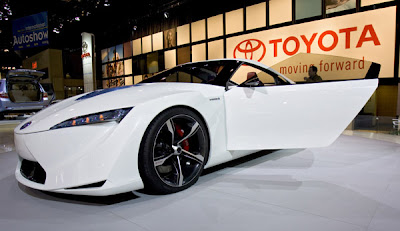

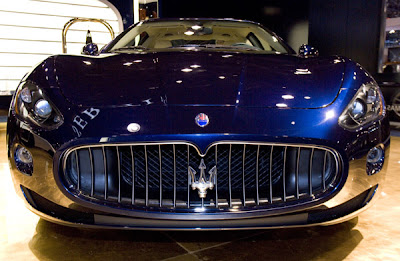
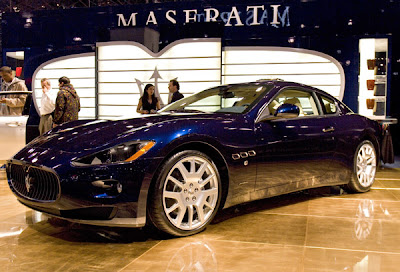
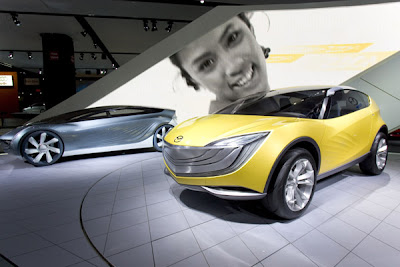
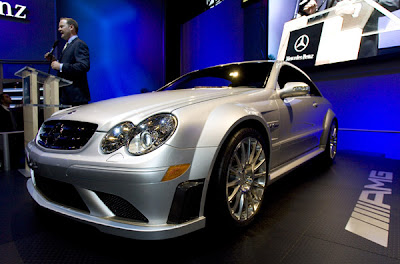
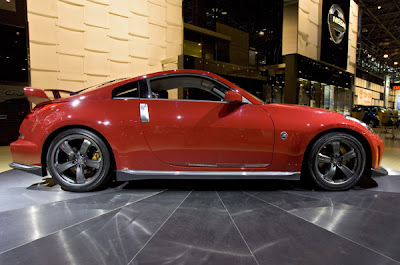
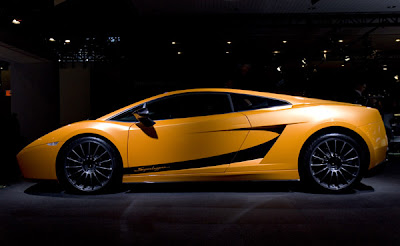
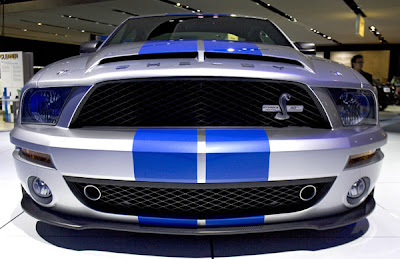
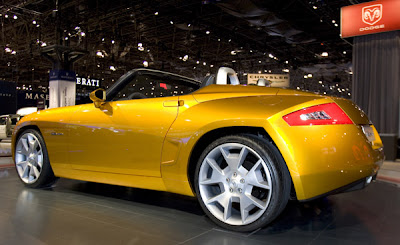

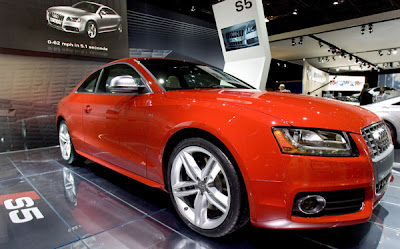



























 Look at the image, these scratches on the trunk were made by the bushes.
Look at the image, these scratches on the trunk were made by the bushes. I put a little amount of polishing compound onto a damp sponge and buff the scratched area in a circular motion until scratches disappear. But don't overdo it. I'd suggest trying a small area first, to get use to the process. Then I wash off the area completely.
I put a little amount of polishing compound onto a damp sponge and buff the scratched area in a circular motion until scratches disappear. But don't overdo it. I'd suggest trying a small area first, to get use to the process. Then I wash off the area completely.  Now it's time to use a liquid wax. I squeeze a little amount of wax onto a sponge and spread evenly on the scratched area. I wait a little allowing product to haze, then, using a soft towel, I buff the wax.
Now it's time to use a liquid wax. I squeeze a little amount of wax onto a sponge and spread evenly on the scratched area. I wait a little allowing product to haze, then, using a soft towel, I buff the wax. Now you see the result.
Now you see the result.



